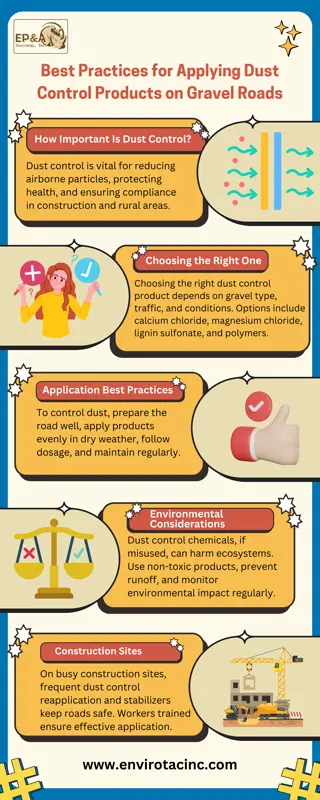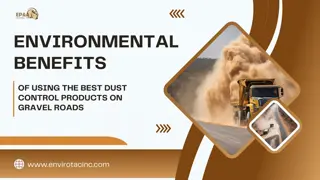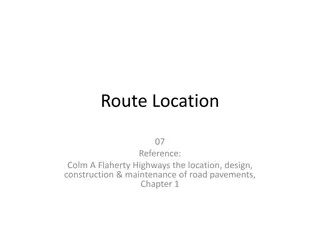Proposed Updates to Dirt, Gravel, and Low Volume Road Program Administrative Manual
Proposed updates to the Administrative Manual for the Dirt, Gravel, and Low Volume Road Program include revisions to roles and processes for various stakeholders. Changes cover the SCC role, Conservation District Role, Quality Assurance Board Role, Applicant Role, the Center for Dirt and Gravel Roads, additional policies, permits, and requirements. Updates aim to enhance program structure, history, and efficiency, with a focus on quality assurance and administration.
Download Presentation

Please find below an Image/Link to download the presentation.
The content on the website is provided AS IS for your information and personal use only. It may not be sold, licensed, or shared on other websites without obtaining consent from the author.If you encounter any issues during the download, it is possible that the publisher has removed the file from their server.
You are allowed to download the files provided on this website for personal or commercial use, subject to the condition that they are used lawfully. All files are the property of their respective owners.
The content on the website is provided AS IS for your information and personal use only. It may not be sold, licensed, or shared on other websites without obtaining consent from the author.
E N D
Presentation Transcript
Administrative Manual Proposed Updates 3/10/2022 Dirt Gravel and Low Volume Road Program Roy Richardson: SCC rrichardso@pa.gov Justin Challenger: SCC jchallenge@pa.gov Sherri Law: SCC shlaw@pa.gov If you are reading this, then you are successfully seeing the webinar video. Webinar audio should be automatic through your computer (or click joinaudio ), and options can be accessed in the audio options button on the bottom left. If your computer audio is not working, you can listen on your phone by dialing 646-876-9923. Steve Bloser: CDGRS smb201@psu.edu
Webinar Logistics WEBINAR IS BEING RECORDED Note you can ask a question anonymously Q&A For audio via phone: 312-626-6799 2
Administrative Manual DGLVR Administrative Manual Approved 7/2020 1) Introduction 2) SCC Role 3) Conservation District Role 4) Quality Assurance Board Role 5) Applicant Role 6) Center for Dirt and Gravel Roads 7) Additional Policies 8) Permits and Other Requirements Appendices
Administrative Manual 1) Introduction 6-page Abstract of the Program and the rest of the manual. DGLVR Administrative Manual 1) Introduction - unchanged 2) SCC Role 3) Conservation District Role 4) Quality Assurance Board Role 5) Applicant Role 6) Center for Dirt and Gravel Roads 7) Additional Policies 8) Permits and Other Requirements Appendices Program Structure Program History ESM Overview
Administrative Manual 2) SCC Role 4-page summary of SCC role DGLVR Administrative Manual 1) Introduction 2) SCC Role - updated QAQC description 3) Conservation District Role 4) Quality Assurance Board Role 5) Applicant Role 6) Center for Dirt and Gravel Roads 7) Additional Policies 8) Permits and Other Requirements Appendices SCC Structure Program Administration QAQC
Chapter 2 Administrative Manual DRAFT Updated QAQC Description Revised section to be consistent with updated QAQC process 1 or 2 day visit to the District Interviews of staff and QAB can be held virtually prior to in person visit Will send packet of information outlining process well ahead of your QAQC visit
Administrative Manual DGLVR Administrative Manual 1) Introduction 2) SCC Role 3) Conservation District Role Clearer wording in various places Drone policy Updated section on cost allocation methods Contract amendments up to 40% of contract amount clarification on training offerings, including stream crossing trainings Update to consultant/engineering fees section (TBD) Updates to GIS/reporting section (partly covered in webinar 3/4/22) 3) Conservation District Role Over of manual Receiving Funds Accounting for Funds Dispersing Funds to Grantees CD Educational Opportunities Program Eligibility Administering Projects GIS system Annual Reports
Chapter 3 Administrative Manual DRAFT Guidelines for Administrative Expenditures Salary is an eligible administrative expense. This includes technical staff, support staff, and management salaries related to administering the Program. Example administration activities include paperwork, communications, site inspections, meetings, etc. related to DGLVR Projects that have a contract for DGR or LVR project funding.
Chapter 3 Administrative Manual DRAFT Education funds can be used for drones Some districts may choose to use drones to take project pictures, video, and create educational materials. Note that districts using drones for any program are subject to the SCC s Conservation District Drone Utilization Policy .
Chapter 3 Administrative Manual DRAFT Cost allocation Method for Shared Expenses Some conservation district expenses, such as vehicles, rent, and office expenses, are shared between the DGLVR Program and other programs or funding sources. A portion of shared expenses may be eligible DGLVR administrative and/or education expenses, as detailed below: The percent of shared expenses that are eligible DGR expenses are equal to the percent of staff time spent on DGR activities. The percent of staff time spent on DGR activities must be calculated compared to the total staff time spent on all programs/activities sharing the expense. The percent of shared expenses that are eligible LVR expenses are equal to the percent of staff time spent on LVR activities. The percent of staff time spent on LVR activities must be calculated compared to the total staff time spent on all programs/activities sharing the expense.
Chapter 3 Administrative Manual DRAFT Cost allocation Method for Shared Expenses CONTINUED Salaries and associated benefits can only be paid for with DGLVR funds for time spent working directly on the DGLVR Program. Tracking can be done on an hourly basis, a percent effort basis, or some other method that allocates salary in accordance with time spent on the DGLVR Program. Salary and benefits for time spent on DGR activities are to be paid for with DGR funds. Salary and benefits for time spent on LVR activities are to be paid for with LVR funds. If a conservation district chooses to divide salaries on a percent basis, then: the percent of a staff member s salaries and benefits paid for with DGR funds must be proportionate to the amount of time that staff member spends on DGR activities out of the staff member s total hours in a given time period. The percent of a staff member s salaries and benefits paid for with LVR funds must be proportionate to the amount of time that staff member spends on b activities out of the staff member s total hours in a given time period.
Chapter 3 Administrative Manual Cost allocation Method for Shared Expenses CONTINUED The conservation district must keep and be able to provide documentation to the SCC of time spent on DGR and LVR activities as part of the administration and education funding record-keeping. (7 years) DRAFT Examples of cost allocation methods that meet the policy outlined above are available in appendix TBD. These are not the only acceptable cost allocation methods. For assistance in developing a cost allocation method, contact the SCC.
Proposed Appendix CAM examples for Admin Manual DRAFT Example 3: If a district has a vehicle that is shared unequally by several programs, vehicle expenses or charges must be based on actual usage for each Program.
Proposed Appendix CAM examples for Admin Manual DRAFT Cost Allocation Method Example 3: Vehicle shared unequally by multiple programs 5% of use is for DGR 8% of use is for LVR How shared expenses are paid: 5% are eligible DGR expenses 8% are eligible LVR expenses 87% are NOT eligible DGLVR expenses 87% of use is for Other Program(s)
Proposed Appendix CAM examples for Admin Manual Example 3: Vehicle is used for 500 miles in a quarter. 52 of those miles were for DGR activities, and 110 were for LVR activities. Eligible DGR mileage expense = 52 x $0.58 (or other acceptable mileage rate) = $30.16 Eligible LVR mileage expense = 110 x $0.58 (or other acceptable mileage rate) = $63.80 How much of a $50 oil change is eligible for reimbursement with DGR and LVR funds? DGR: 52 = 0.104 500 $50 x 0.104 =$5.20 of the oil change is an eligible DGR expense LVR: 110 = 0.22 500 $50 x 0.22 = $11.00 of the oil change is an eligible LVR expense
Chapter 3 Administrative Manual DRAFT Contract Amendments In some cases, the grant recipient may request additional time or addition funding above the contracted amount to complete a project. The approval of additional time or funding to a contract is at the discretion of the district board, based either on a case by case basis or by county policy. Districts may develop their own policies for handling cost overruns and time extensions, provided they are consistent with Commission policy. It is up to the discretion of the conservation district board if amendments to existing contracts must be recommended by the QAB. There is no additional funding from the Commission to pay for cost overruns.
Chapter 3 Administrative Manual DRAFT Contract Amendments For cost overruns totaling 20 40 percent or less of the initial contract amount, a contract amendment must be completed and signed by both entities (available at www.dirtandgravelroads.org). Multiple amendments may be granted, provided the total of all amendments is not more than 20 40 percent of the initial contract amount. Amendments must be approved by the district board according to policies they establish. For cost overruns totaling more than 20 percent of the initial contract amount, a second separate contract must be made for the additional funds. For contract amendments over 40 percent, written approval is required from the State Conservation Commission.
Chapter 3 Administrative Manual GIS In order to submit quarterly reports, the following must be completed: all income (advances, replenishments, interest) and expenses (project, administrative, and educational) for the quarter must be entered into the GIS system. Local and GIS account balances must match before the quarterly report is submitted each quarter. Information on contracted projects is also required, including checking that all open contracts are in good standing and are not expired. The GIS includes a contract verifier tool that can be used during this process. (topic of 3/4/2022 webinar) Complete the summary of Program activities from district staff for the quarter. The Conservation District Manager, or their approved designee, is required to submit the report.
Administrative Manual 4) QAB Role Defines composition and function of QAB DGLVR Administrative Manual 1) Introduction 2) SCC Role 3) Conservation District Role 4) Quality Assurance Board Role minor clarification on Sunshine Act 5) Applicant Role 6) Center for Dirt and Gravel Roads 7) Additional Policies 8) Permits and Other Requirements Appendices Composition Meeting Requirements QAB Role in Projects QAB Role in Policy
Administrative Manual 5) Applicant Role Intentionally repeats previous material DGLVR Administrative Manual 1) Introduction 2) SCC Role 3) Conservation District Role 4) Quality Assurance Board Role 5) Applicant Role will be updated to match other updates 6) Center for Dirt and Gravel Roads 7) Additional Policies 8) Permits and Other Requirements Appendices Written to the applicant audience Intended to be standalone to give to applicants.
Administrative Manual 6) Center Role DGLVR Administrative Manual 1) Introduction 2) SCC Role 3) Conservation District Role 4) Quality Assurance Board Role 5) Applicant Role 6) Center for Dirt and Gravel Roads unchanged 7) Additional Policies 8) Permits and Other Requirements Appendices 3-page overview of Center role and available services Education Outreach Technical Assistance Documentation
Administrative Manual DGLVR Administrative Manual 1) Introduction 2) SCC Role 3) Conservation District Role 4) Quality Assurance Board Role 5) Applicant Role 6) Center for Dirt and Gravel Roads 7) Additional Policies Stream crossing updates DSA updates Fill Policy update Sealed surface update 8) Permits and Other Requirements Appendices 7) Additional Policies Policies that apply to certain circumstances: Stream Crossing Replacement Driving Surface Aggregate Paved LVR-Specific Policies Full Depth Reclamation
DSA Standard Administrative Manual DSA Standard updates Abrasion Resistance: The loss of mass (LA Abrasion) shall be less than 40% 45%. https://pavementinteractive.org/reference-desk/testing/aggregate-tests/los-angeles-abrasion/
DSA Request for Quote Administrative Manual RFQ updated (not policy) updated DSA Specification language incorporated Clarifications of which parts can be edited vs which parts are required/in the specification added: Roller to be: Double drum roller equipped with functional spray bars and scrapers. Single drum dirt roller <single drum not preferred but may be needed on sites with steep banks or hills edit RFQ to specify allowed rollers>). Added: Equipment must be on-site to cut paving notches and/or repair damaged ditches or road sections (e.g., skid steer, backhoe).
Chapter 7 Administrative Manual Fill Policy updated Driving surface aggregate meeting the Commission s specification is the only approved road surface material that may be purchased (for DGR projects) with Program funds. The only exception to this is on road fill projects. Road fill projects are defined as projects which install an average compacted thickness of 12-inches or more of fill material, not including the driving surface, to allow for proper drainage and/or strengthen the existing road base. Road fill projects must be capped with DSA or an alternative aggregate at a minimum depth of 6-inches. Shale or bank-run gravel may not be used as the final driving surface. This exception is not meant to replace DSA with fill.
Chapter 7 Administrative Manual Fill Policy updated Unchanged: Driving surface aggregate meeting the Commission s specification is the only approved road surface material that may be purchased (for DGR projects) with Program funds.
Chapter 7 Administrative Manual Fill Policy updated The only exception to this is on road fill projects. Road fill projects are defined as projects which install an average compacted thickness of 12- inches or more of fill material, not including the driving surface, to allow for proper drainage and/or strengthen the existing road base.
Chapter 7 Administrative Manual Fill Policy updated Road fill projects must be capped with DSA or an alternative aggregate at a minimum depth of 6- inches. Shale or bank-run gravel may not be used as the final driving surface. This exception is not meant to replace DSA with fill. Shale is not an eligible driving surface
Chapter 7 Administrative Manual Asphalt and Chip seal are the only paving or sealing materials approved for the use with Program funds and must conform to PennDOT Pub 408 or Pub 447. Note that the use of petroleum solvent based cutback asphalts such as MC-30 and MC-70 and NOT allowed for use in the Program. Pictures of chip seal application
Administrative Manual 8) Permits and Other Requirements DGLVR Administrative Manual 1) Introduction 2) SCC Role 3) Conservation District Role 4) Quality Assurance Board Role 5) Applicant Role 6) Center for Dirt and Gravel Roads 7) Additional Policies 8) Permits and Other Requirements - unchanged Appendices Brief overview of permit issues related to Program projects.
Administrative Manual Appendices DGLVR Administrative Manual 1) Introduction 2) SCC Role 3) Conservation District Role 4) Quality Assurance Board Role 5) Applicant Role 6) Center for Dirt and Gravel Roads 7) Additional Policies 8) Permits and Other Requirements Appendices - add Cost Allocation Method examples Appendix A: Dirt, Gravel, and Low-Volume Road Program Law 9106 Appendix B: Commission Statement of Policy Appendix C: Contract and Attachments Appendix D: Contract Amendment Appendix E: Stream Crossing Replacement Evaluation Appendix F: Traffic Count Validation and Instructions Appendix G: Project Completion Report and Instructions Appendix H: Definitions and Acronyms























